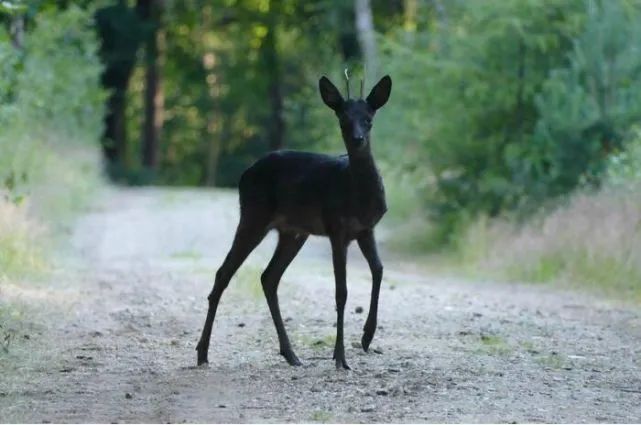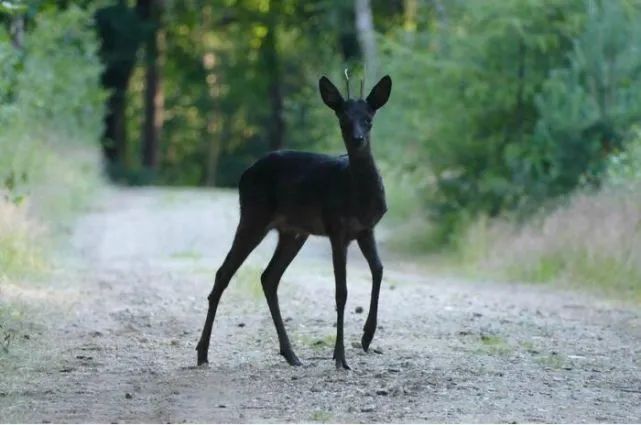Deep within forested landscapes, a rare genetic variation gives birth to the black fawn—a creature whose obsidian coat sets it apart from its tawny - colored peers. This phenomenon, known as melanism, results from an overproduction of melanin, causing the fur to darken to near - black. While most deer species exhibit light - brown spots as fawns for camouflage, black fawns sport solid jet - black fur, often with faint residual spots that fade over time. Found in species like white - tailed deer and roe deer, these individuals spark curiosity among biologists and nature observers alike.

Source: Images from the Internet, if there is any infringement, please contact the removal of
Melanistic fawns face a unique survival calculus. Their dark coloration may offer advantages in dense, shadowy woods, where it enhances camouflage against predators like wolves or cougars. However, in sunlit meadows or snowy environments, the black coat becomes a liability, making them more visible. Additionally, the mutation might affect thermoregulation—black fur absorbs more sunlight, potentially aiding warmth in cold climates but increasing overheating risks in summer. Despite these challenges, some black fawns thrive, with studies noting that melanism can persist in populations where environmental factors favor the trait.
In folklore and cultural traditions, black deer often carry symbolic weight. In Native American lore, they are seen as spiritual messengers, while in European myths, their rare appearance has been linked to omens or enchantment. Today, conservationists monitor these individuals carefully, as habitat loss and climate change may impact their survival. The black fawn’s striking presence serves as a testament to nature’s genetic diversity—and a reminder of the mysterious beauty hidden within wild spaces.


